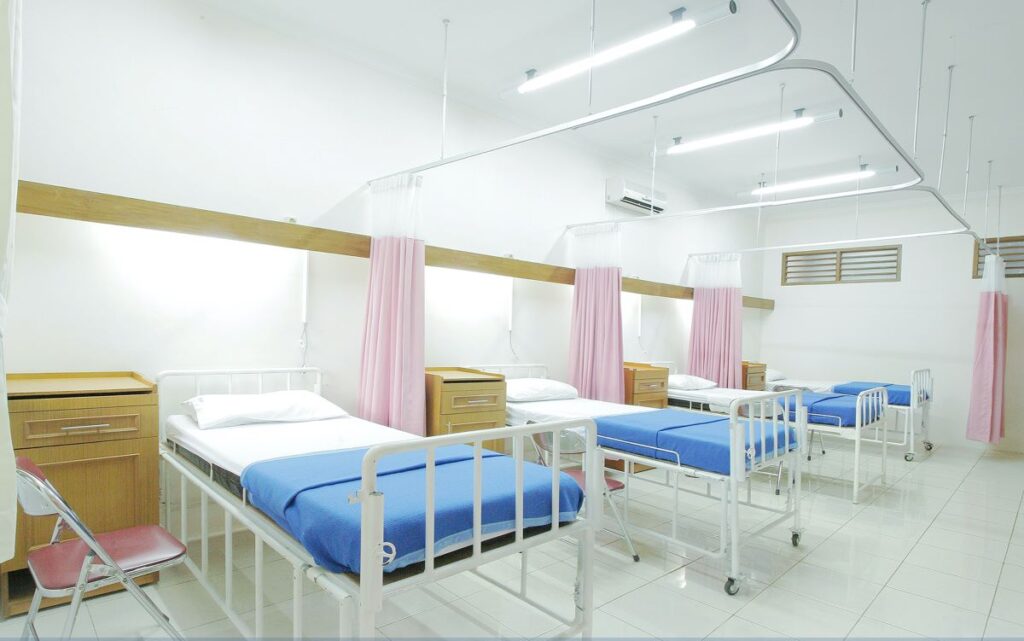
For many years the only possible treatment for people in acute mental health crisis was hospital admission. This has changed over the past decades thanks to the implementation of home treatment as an alternative to acute hospital admission. People who are experiencing an acute crisis in their mental health now have the option of staying at home with the support of a multidisciplinary team of mental health professionals, who can manage their care and risks outside of a hospital (Johnsons, Needle, Bindman, Thornicroft, 2008).
A crisis resolution team (CRT) or home treatment team (HTT) is a service that operates around the clock to provide support for people dealing with a mental health crisis, and is made up of psychiatrists, mental health nurses, psychologists, social workers and team assistants (Home Treatment Accredited Scheme, 2019). The main aim of a HTT is to reduce hospital admission, and the costs associated with this, while providing effective and accessible care plans co-produced with service users and their families.
In contrast to other outreach services, HTT’s intervention is brief, which varies between a few days to a couple of weeks. After a service user is assessed and considered to be appropriate for home treatment, the HTT keeps contact with the patient on a daily basis. If the risk is too high, other alternatives such as crisis house admission and day unit centres could be considered alongside hospital admission.
Although crisis resolution and home treatment service models have been widely implemented in various mental health systems around the world (Hubbeling & Bertram, 2012); there is only moderate evidence for its effectiveness due to limited and outdated studies. To address this, Stulz et al. (2020) conducted a randomised control trial focused on testing whether home treatment services would enable a reduction of hospital use over a 24 months period, compared with hospital admissions.

Home Treatment Teams enable service users dealing with acute mental health problems to be treated at home by a group of multidisciplinary professionals.
Methods
This research took place in Aaroug, north-west Switzerland, which has a population of 650,000 habitants, and where the main mental health care provider, Psychiatric Services Aargau AG (PDAG), covers approximately 75% of the hospital bed days in the whole of Aargau. The local home treatment team (HTT) is also managed by the PDAG, and its main aim is to provide acute outreach mental health care 24/7. For this study, the established HTT screened service users for whom immediate in-patient treatment was deemed necessary across the 1-year study enrolment time (April 2015- April 2016). All participants selected for the study were randomised after they met the following inclusion criteria:
- Were aged between 18-64
- Had permanent private address (no residential accommodation) reachable by car within 30 minutes from the home treatment base
- Had one of the following diagnoses: Schizophrenia, schizotypal and delusional disorders, Mood [affective] disorders, Neurotic, stress-related and somatoform disorders, personality disorders, etc
- Had been referred to the department of general psychiatry
- Had basic health insurance (patients with supplementary ‘private’ health insurance plans were treated on different hospital wards)
- Had sufficient German language skills to communicate without an interpreter.
In addition, patients with alcohol, cocaine or opioid dependence and patients with intellectual disability or organic mental disorders were excluded, regardless of whether one of the listed disorders was the primary or secondary diagnosis.
During the enrolment period, a total of 2,795 service users were referred to hospital for admission, of whom 2,088 patients were excluded from the study and directly admitted to appropriate hospital wards. A total of 707 service users were allocated into two groups: an experimental group (412), where service users were treated by HTT and a control group (295), where service users received care only on hospital wards. A single randomised consent design was used in the study to prevent limitation of sample due to patients lacking capacity to make informed decision about their care. Participants were randomised using the Zelen method, which was proposed by Zelen in 1979, as a trial method of randomising participants before acquiring consent in order to enhance recruitment to clinical trials (Adamson et al., 2006).
Results
- Results of this study showed that the number of hospital days per service user within the 24 month period was reduced by 30.4% (mean 41.3 v. 59.3; P<0.001) when home treatment was available following the initial period of crisis
- The overall difference between the experimental and control groups regarding treatment duration (hospital days together with home treatment days per service user and number of hospital admissions per service user) was not statistically significant.
- Additionally, there were no significant differences between groups regarding clinical and social outcome of patients’ satisfaction with care, measured by Perception of Care questionnaires
- The number of admissions and re-admissions per service user during the 24 months study period did not differ significantly between groups
- The most frequent reasons for non-initiation of home treatment in the experimental group were:
- refusal of crisis team intervention by a service user (28.4%);
- unplanned discharge before home treatment team could be involved (22.2%);
- and clinical considerations, such as acute suicidality (16.4%)
- The total treatment costs per patient reimbursed by health insurers and the health department during the 24-month follow-up period was not significantly lower in the experimental group compared with the control group
- Finally, relatively few service users in the experimental group had no admissions to hospital in the study period, with the vast majority (95.4%, N=672) of service users receiving home treatment support also staying several days on hospital wards.

Treating people at home led to fewer hospital days per patient, but did not prevent hospital admission entirely.
Conclusions
The authors concluded that home treatment teams (HTT) can reduce the use of hospital beds among severely ill service users experiencing acute mental health crisis, with comparable clinical and social outcomes. Additionally, the patients’ satisfaction of home treatment seems to be very similar to standard inpatient care. In contrast to previous findings, this study showed that HTT does not prevent the initial hospital admission but works on a similar basis to inpatient admission, but with less restrictions for a service user. It seems that more research is still needed to fully evaluate the effectiveness of home treatment team involvement.

Service users report equal satisfaction with home treatment versus acute inpatient care.
Strengths and limitations
The main strength of this study is that Stulz et al., (2020) managed to conduct a randomised controlled trial, successfully overcoming the limitation of gaining consent and recruiting a large sample of participants across a period of 24 months. This trial found that intensive home treatment was indeed helpful in reducing hospital admissions (bed days) by rapid crisis intervention.
Despite its strengths, there were some limitations to this study. For instance, the researchers were unable to evidence that home treatment intervention significantly prevents hospital admission altogether, which could be due to strict triaging and gatekeeping procedures. The decision of referring someone to hospital or a home treatment team depended not only on clinical decisions, but also on out of hours assessments or availability to randomise patients immediately after they were assessed.
The studied sample that included involuntary admissions and patients who were unable to make informed decisions could not be fully analysed due to ethical requirements. Additionally, the authors had to rely exclusively on routinely and mandatorily recorded data gathered by clinical staff, so it was also not possible to mask the clinicians involved in the study.

The authors conducted a successful randomised controlled study across 24 months period, but it’s hard to say how representative the data really is.
Implications for practice
More research in this area is needed to help better evaluate home treatment services around the world and find out what factors are actually helping in reducing hospital admissions or preventing re-admission. Many past studies have concentrated on treatment costs and only secondarily looked at the service users’, and their families’, satisfaction. Hospital admissions often carry risks and should always be the last resource to manage service users’ risks and mental health problems. Many of the service users we have worked with over the past two years, often reported that they found home treatment team interventions more helpful than hospital admission, as they could remain in their own environment and with their family. Of course, often it is impossible to manage a severely relapsing, acutely unwell service user in the community and the admission needs to happen to reduce risks to self, from others and to others. However, to prevent relapses it is important to involve service users and their support network, when developing their care plans to try to meet their expectation stated at the beginning of crisis team intervention.
This study did not include much information about the follow up plans for all the service users taking part in research, which in our personal opinions, as clinicians working in a home treatment crisis team, can be crucial in preventing re-admission or even re-referral to crisis team services.
We believe the clarity of a crisis team role is crucial because not every service user will find HTT interventions helpful due to its set up. We have often heard of people’s dissatisfaction around seeing different clinicians, being seen too often, or not being able to have therapy. HTT interventions can be, however, very beneficial if the service user is appropriately fitted to HTT criteria, which makes the assessment process so significant. We hope that future studies concentrate more on what makes a crisis team intervention most effective, and show how challenging it can be to work with such a variety of service users and their different circumstances and mental health conditions.

There is still a lot of space for future research around home treatment and crisis team interventions to help optimise these services for users and their carers.
Statement of interests
None.
Links
Primary paper
Stulz N, Wyder L, Maeck L, Hilpert M, Lerzer H, Zander E, Kawohl W, Grosse Holtforth M, Schnyder U and Hepp U (2020). Home treatment for acute mental healthcare: randomised controlled trial. The British Journal of Psychiatry, 216(6), 323-330. doi:10.1192/bjp.2019.31
Other references
Adamson J, Cockayne S, Puffer S, Torgerson DJ. (2006). Review of randomised trials using the post-randomised consent (Zelen’s) design. Contemporary Clinical Trials, Volume 27, Issue 4, 305-319.
Baugh C, Blanchard E, Hopkins I, Singh P (2019). Home Treatment Accreditation Scheme (HTAS).Standards for Home Treatment and Crisis Resolution Teams – Fourth Edition.
Hubbeling D, Bertram R. (2012). Crisis resolution teams in the UK and elsewhere. J Ment Health; 21: 285–95.
Johnson S, Needle J, Bindman JP, Thornicroft G. (2008). Crisis Resolution and Home Treatment in Mental Health. Cambridge University Press.
Murphy SM, Irving CB, Adams CE, Waqar M. (2015). Crisis intervention for people with severe mental illnesses. Cochrane Database Syst Rev 12: CD001087.
Photo credits
- Photo by Louis Hansel @shotsoflouis on Unsplash
- Photo by Jr Korpa on Unsplash
- Photo by Adhy Savala on Unsplash
- Photo by Sharon McCutcheon on Unsplash
- Photo by Photo Boards on Unsplash
- Photo by Kyle Glenn on Unsplash

I love the article & just reading this reminds me of the importance of Crisis Team Service in Psychiatry. This evidence shows that mental health has come a long way.
You are both an asset to the North Camden Crisis Team.. Well done ladies.
Nice discussion of an interesting article.
I was wondering though whether the outcome is influenced by the fact that the investigators had 12 home treatment team slots. The authors reported that they wanted a reasonable occupancy of these slots and adjusted the random allocation ratio accordingly on a week by week basis. This could have created a bias, if there is seasonal variation in the number of admissions. Also, it may (unconsciously) influence the people doing the initial assessment. You may spend more time and energy, if you know you have to fill a home treatment team slot.
Also, given that 95% of the patients ended up in hospital, would it not be fair to characterise this study as an RCT of early discharge?